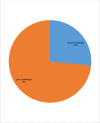Preconception care utilization and associated factors among reproductive age women in Mizan-Aman town, Bench Sheko zone, Southwest Ethiopia, 2020. A content analysis
- PMID: 35984828
- PMCID: PMC9390911
- DOI: 10.1371/journal.pone.0273297
Preconception care utilization and associated factors among reproductive age women in Mizan-Aman town, Bench Sheko zone, Southwest Ethiopia, 2020. A content analysis
Abstract
Background: Preconception care is highly important in reducing a number of adverse pregnancy outcomes and helps to improve maternal health. Preconception care optimizes women's health and improves pregnancy outcomes. It is a cost-effective first-line preventive strategy for birth defects. However, preconception care utilization in Ethiopia was very low. Studies on these issues are limited in Ethiopia in general and in Mizan-Aman town in particular.
Objective: To assess preconception care utilization and associated factors among reproductive age women in Mizan-Aman town, Bench-Sheko Zone, Southwest Ethiopia.
Methods: A community based cross-sectional study design was employed from April 16 to May 26, 2020 in Mizan-Aman town. The total study participants were 624 reproductive age women. Data were collected by using pre-tested interviewer administered questionnaires and entered into Epi-data version 3.1 then exported to STATA version 14 and analyzed accordingly. Univeriate and Bivariable analysis was done by analysis of variance (ANOVA) and independent t-test. Multivariable statistical analysis using generalized linear regression model (GLM) approach was used to classify factors of preconception care utilization. Since our response variable is measured in terms of count variable, we used a Poisson regression model with a log link function. Finally, Statistical significance between dependent and independent variables were assessed by odds ratios and 95% confidence intervals.
Results: Overall, 28.6% of the women receipt atleast one item of preconception care while only 1.5% were taken the whole recommended components of preconception care services. The most common item received in the study area was taking micronutrient supplementation (18.5%). Age of women, educational status, husbands educational status, husbands occupation, wealth status, distance from the health facility, waiting time to get services, planning to pregnancy, age at first pregnancy, previous ANC use, Previous PNC use, adverse pregnancy experience, women's knowledge of preconception care, and attitude on preconception care were determinants of preconception service utilization.
Conclusions: Preconception care component utilization was lower as compare with recommended service with different disparities. Multipurpose tailored strategies which incorporate a woman with no formal education, poor knwledge on preconception care,never take maternal services previously and distant from health facility could improve preconception care service utilization. Advocative strategies on preconception care component and planning pregnancy may elicite more women to use the services of preconception care.
Conflict of interest statement
The authors declare that they have no competing interests.
Figures



References
-
- organization WH. Meeting to develop a global consensus on preconception care to reduce maternal and childhood mortality and morbidity. Geneva, Swizerland: WHO; 2012.
-
- Organization WH. Preconception care: maximizing the gains for maternal and child health. Geneva: World Health Organization. 2013.
-
- Jessie R CPaHK. Recommendations to Improve preconception health and health Care; Strategies for Implementation. A Report from the CDC. Journal of women’s health(Larchmt). 2007;16 (4):454–7. - PubMed
MeSH terms
Substances
LinkOut - more resources
Full Text Sources
Medical
Miscellaneous

